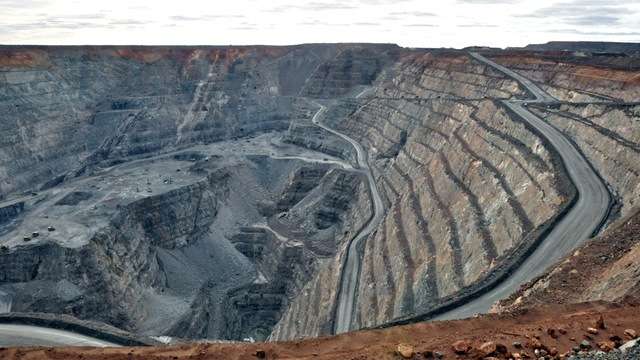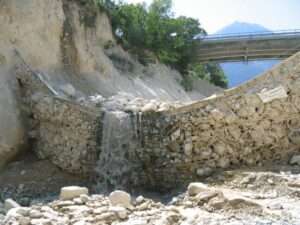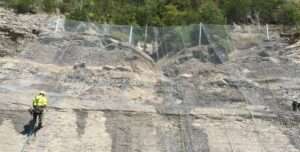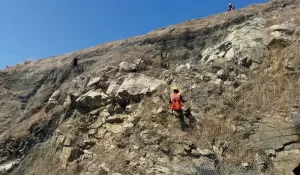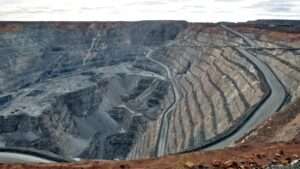Rockfalls pose a significant threat to infrastructure, public safety, and the environment, particularly in areas with steep slopes, mountainous terrain, and unstable rock formations. Effective rockfall mitigation strategies are essential for preventing these natural hazards from causing damage or injury. Various techniques and technologies have been developed to stabilize slopes, secure loose rocks, and protect vulnerable areas from rockfall events. This article explores the most effective rockfall mitigation strategies and the technologies used to protect slopes and structures.
1.Understanding Rockfall Hazards
Rockfalls occur when pieces of rock or debris detach from a steep slope or cliff face and fall to lower elevations due to gravity. These events can range from small rockslides to large, catastrophic rockfalls that can damage roads, railways, buildings, and other infrastructure. The risk of rockfall is influenced by factors such as slope steepness, rock type, weather conditions, and seismic activity.
2.Rockfall Mitigation Strategies
There are several strategies for mitigating rockfall hazards, each tailored to specific site conditions and risks. The most effective mitigation strategies often involve a combination of approaches, including engineering solutions, landscape modification, and preventive measures.
3.Slope Stabilization
Stabilizing slopes is one of the most effective ways to prevent rockfalls. Slope stabilization techniques aim to reduce the forces that cause rocks to dislodge and fall. Key methods for stabilizing slopes include:
- Soil Nailing: This involves inserting steel bars (nails) into the slope to improve its structural integrity. The nails are typically anchored in deeper, more stable layers of soil or rock and provide resistance to slippage or failure.
- Rock Bolts: These are used to secure loose rock to the slope. Rock bolts are drilled into the rock mass, and the rock is then anchored using a variety of methods, such as resin grouting or tensioning.
- Shotcrete (Sprayed Concrete): Shotcrete is often used to cover the surface of unstable slopes, creating a protective layer that holds loose rock and soil in place. It is particularly effective on steep or difficult-to-reach surfaces.
- Mesh Systems: High-tensile wire mesh systems can be installed over slopes to prevent rocks from falling. These systems catch rocks and prevent them from sliding down the slope, reducing the risk of rockfall hazards.
- Soil Reinforcement: For softer or more unstable soils, soil reinforcement techniques such as geogrid installation or soil stabilization additives may be used to improve slope stability.
4.Rockfall Barriers
Rockfall barriers, or rockfall protection nets, are another key technology used for protecting infrastructure from rockfall hazards. These barriers are typically installed along roads, railways, or construction sites in areas where rockfall risk is high. The barriers are designed to catch falling rocks and dissipate their energy, preventing damage to structures or injury to people.
There are two main types of rockfall barriers:
- Flexible Barriers: These are made of high-tensile wire mesh and are designed to absorb and dissipate the energy of falling rocks. They are typically used in areas with moderate to high rockfall risks and can be installed with minimal disruption to the landscape.
- Semi-Rigid and Rigid Barriers: These are more robust systems that provide additional strength for areas with higher rockfall energy. They are often made from steel or concrete and are designed to stop larger rocks from impacting sensitive areas.
5.Rockfall Drains and Channels
In areas where rockfall events are frequent, constructing rockfall drains and channels can help redirect falling rocks to designated areas where they will not pose a threat to infrastructure or human life. These channels are often lined with protective materials and designed to guide rocks safely to the ground without causing damage.
Vegetative Cover and Landscaping
In some cases, vegetation can be used as a natural method of preventing rockfalls. Planting trees, shrubs, or grasses on slopes can help anchor loose soil and rock, reducing the risk of rockfall. Additionally, vegetative cover can improve the aesthetic quality of the landscape while providing a low-impact solution for mitigating rockfall hazards.
Monitoring and Early Warning Systems
Technology plays a vital role in monitoring rockfall risks and providing early warning signals. Various monitoring systems, such as ground-based radar, motion sensors, and vibration monitors, can detect signs of ground movement or instability. These systems can trigger alerts that provide time for evacuations or preventive measures to be taken before a rockfall occurs.
6.Advanced Rockfall Mitigation Technologies
Recent advancements in rockfall mitigation technology have introduced more sophisticated and effective solutions for protecting slopes and infrastructure.
Rockfall Simulation and Modeling
Using advanced computer models, engineers can simulate rockfall events and predict the path of falling rocks based on factors such as slope angle, rock type, and weather conditions. These simulations help determine the most effective mitigation methods and allow for the design of custom solutions for each site. Rockfall simulation tools are essential for assessing risk and optimizing mitigation strategies.
Smart Rockfall Barriers
Some modern rockfall barriers incorporate smart technologies, such as sensors and automated systems, that can adapt to the intensity of rockfall events. These smart systems can detect the size, speed, and trajectory of rocks, adjusting the barrier’s tension or deployment accordingly. This innovation improves the performance of barriers and ensures greater protection against rockfalls.
Geotechnical Instrumentation
Geotechnical instrumentation such as inclinometers, piezometers, and extensometers can be used to monitor slope movements and detect early signs of instability. This equipment helps engineers assess the condition of the slope over time and take proactive measures before rockfall hazards become critical.
7.Best Practices for Rockfall Mitigation
Comprehensive Site Assessment
Before implementing any rockfall mitigation strategies, a thorough site assessment is essential. This includes analyzing the geological conditions, slope geometry, rock mass characteristics, and historical rockfall activity. A comprehensive risk analysis ensures that the most appropriate mitigation techniques are selected based on site-specific conditions.
Designing a Multi-Layered Approach
Effective rockfall mitigation often requires a combination of strategies tailored to the specific needs of the site. For example, a slope might benefit from a combination of slope stabilization, rockfall barriers, and monitoring systems. A multi-layered approach increases the overall effectiveness of rockfall mitigation efforts.
Regular Maintenance and Monitoring
Rockfall mitigation systems, including barriers, meshes, and stabilization techniques, should be regularly inspected and maintained to ensure their continued effectiveness. This includes monitoring for signs of wear, corrosion, or damage, as well as adjusting the systems to accommodate changes in slope conditions.
Public Safety and Communication
In areas where rockfall risk is high, effective communication and public safety plans are essential. Early warning systems, clear signage, and ongoing risk assessments help protect communities from rockfall hazards. Public awareness campaigns can also educate residents and travelers on the importance of staying safe in high-risk areas.
Conclusion
Rockfall mitigation is a critical aspect of slope protection in areas prone to geological hazards. By using a combination of engineering solutions, advanced technologies, and monitoring systems, it is possible to significantly reduce the risk posed by rockfalls to infrastructure and public safety. With ongoing advancements in rockfall mitigation technologies and a proactive approach to site assessment, communities can better protect themselves from the destructive impact of rockfall events. Whether through slope stabilization, rockfall barriers, or innovative monitoring systems, these strategies play a vital role in safeguarding the environment and enhancing the resilience of infrastructure in rockfall-prone areas.


